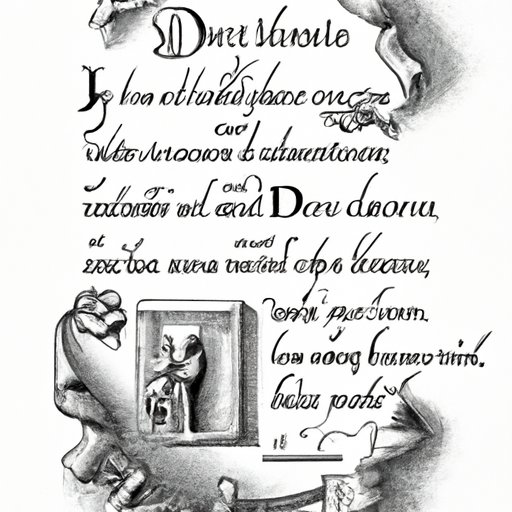
Introduction
John Donne’s “A Valediction Forbidding Mourning,” published in 1631, is a shining example of metaphysical poetry that has inspired generations of readers. This poem explores the themes of love, separation, and the inevitability of death, expressing a unique perspective on these universal experiences. In this article, we are going to take a closer look at this masterpiece, discussing its historical context, literary devices, themes, and conducting a close reading of the poem.
Historical Context
To appreciate any literary work, it’s essential to understand the historical context behind it. In this case, Donne wrote this poem during the 17th century, a time of political unrest and religious tension in England. The puritan movement had gained significant influence, and religious upheavals were a common occurrence. In this context, Donne’s poetry stands out as an expression of originality and individuality; it was an attempt to break free from traditional literary forms and explore new dimensions.
“A Valediction Forbidding Mourning” reflects this historical context in various ways. One way is its use of imagery to explore the universe’s workings. For example, in the first stanza, Donne compares the separation of the lovers’ souls to the movement of heavenly bodies, thus exploring the natural laws that govern the universe.
Comparative Analysis
Donne’s unique style distinguishes him from his contemporaries. While the likes of William Shakespeare were known for their flowery language and elaborate metaphors, Donne’s poetry was characterized by its intellectualism and wit. As such, his writing style was known as “metaphysical poetry.”
In “A Valediction Forbidding Mourning,” Donne employs various literary devices, including conceits, which are extended metaphors that explore an idea in detail. For instance, in the second stanza, the lovers’ souls are compared to the feet of a compass, with one foot fixed and the other set to roam. This metaphor illustrates the idea of the poet’s soul traveling to the other side while the lover’s soul remains tethered to the earth.
Close Reading
“A Valediction Forbidding Mourning” comprises nine stanzas of four lines each, also called quatrains. The poem’s structure is regular, with the rhyme scheme being ABAB. Each stanza presents a clear image or metaphor that contributes to the overall theme.
The poem’s opening stanza establishes the central conceit of the poem, comparing the speaker’s separation from his partner to the travels of heavenly bodies. The comparison suggests that the speaker’s love is truly cosmological, and the love between the speaker and his partner is not limited to mere earthly connections. Each subsequent stanza continues to expand upon this central metaphor, using vivid imagery to illustrate their separation and the depth of their connection.
Literary Devices
“A Valediction Forbidding Mourning” is replete with numerous literary devices, including metaphors, similes, and conceits. Metaphors are used to compare two unlike objects directly, while similes involve comparing two objects using ‘like’ or ‘as.’ One of the most prominent examples of metaphor in the poem is the comparison of the lovers’ souls to a compass, as we have already noted. Another example is when the speaker compares their love to a precious metal in the third stanza.
Universal Themes
One of the reasons “A Valediction Forbidding Mourning” has remained relevant is because it explores universal themes that are still relevant to readers today. One of the most prominent themes is the inevitability of death. The speaker acknowledges that they are going to pass away one day, but it won’t be the end of their love. The poem stands as a testament to the idea that true love can last beyond physical and temporal boundaries.
Conclusion
In conclusion, “A Valediction Forbidding Mourning” is a poem that continues to capture the imagination of readers today. It explores the universal themes of love, separation, and the inevitability of death, utilizing vivid imagery and literary devices to express the poet’s perspective. Appreciating the poem’s historical context, literary devices, and themes can help us understand Donne’s unique perspective and the poem’s relevance to modern readers.
If you want to explore more of John Donne’s poetry, we recommend reading “The Sun Rising,” “Death Be Not Proud,” and “Holy Sonnet 10.” These poems, along with “A Valediction Forbidding Mourning,” will give you a deeper appreciation of the metaphysical poet’s work.




